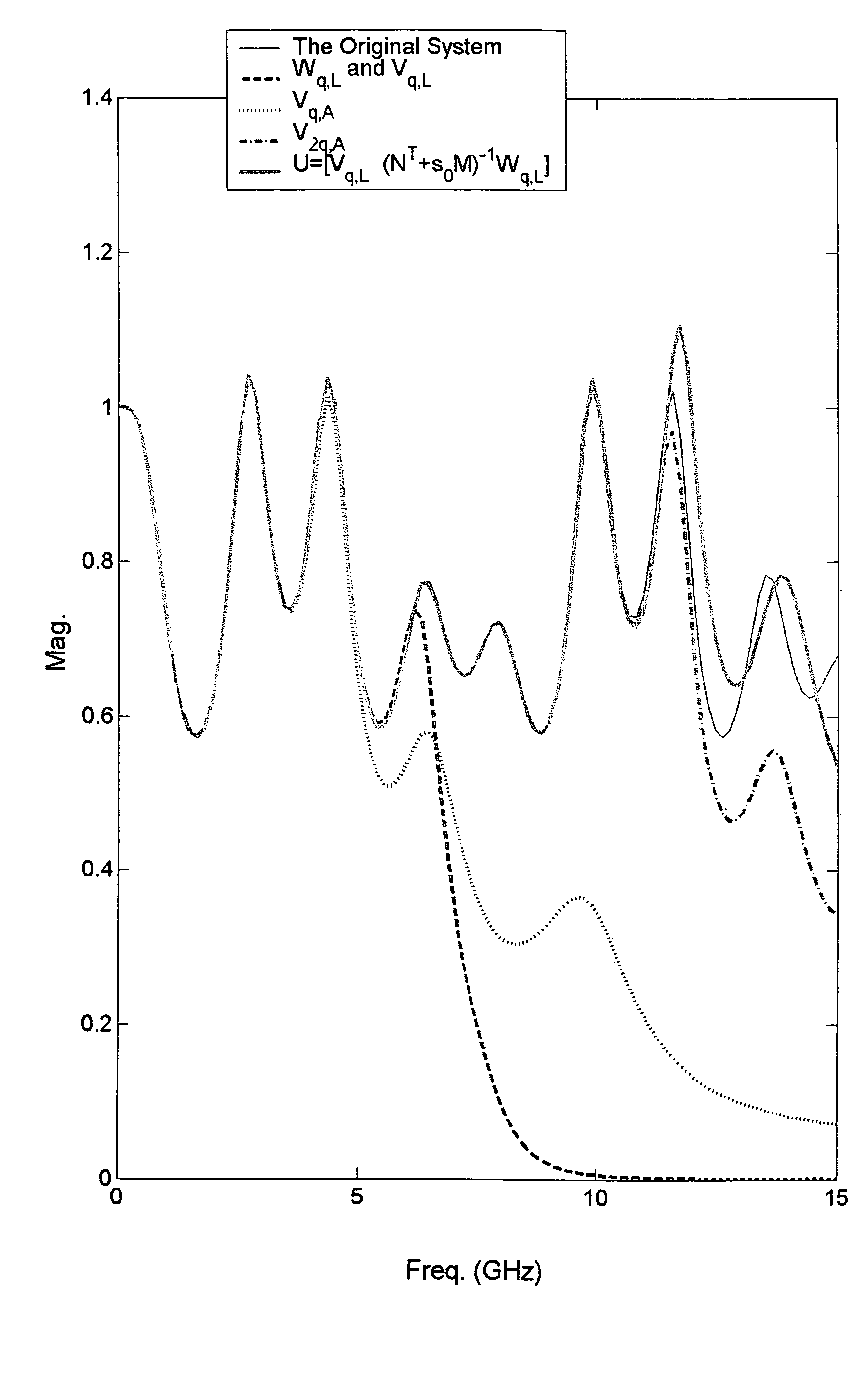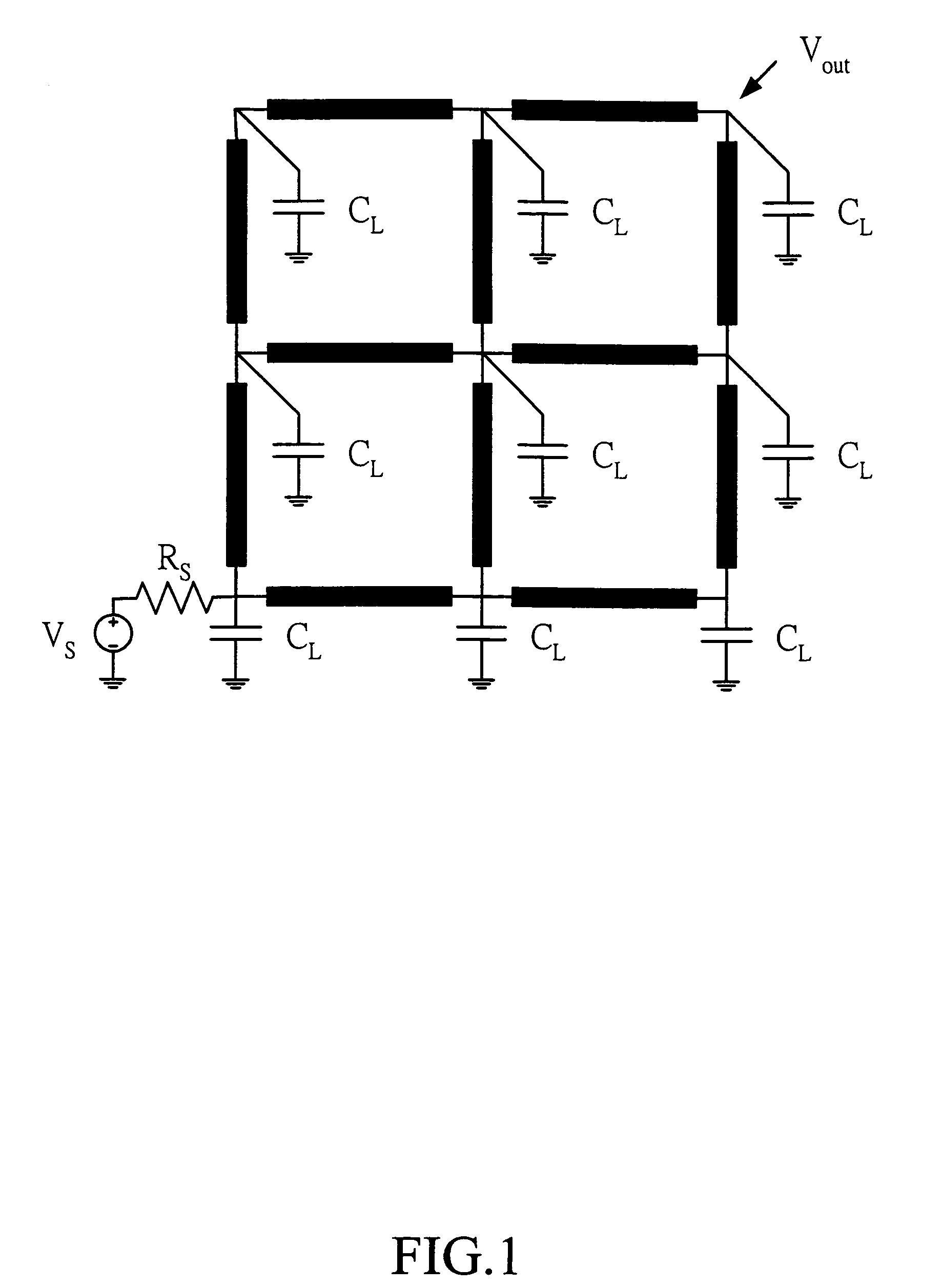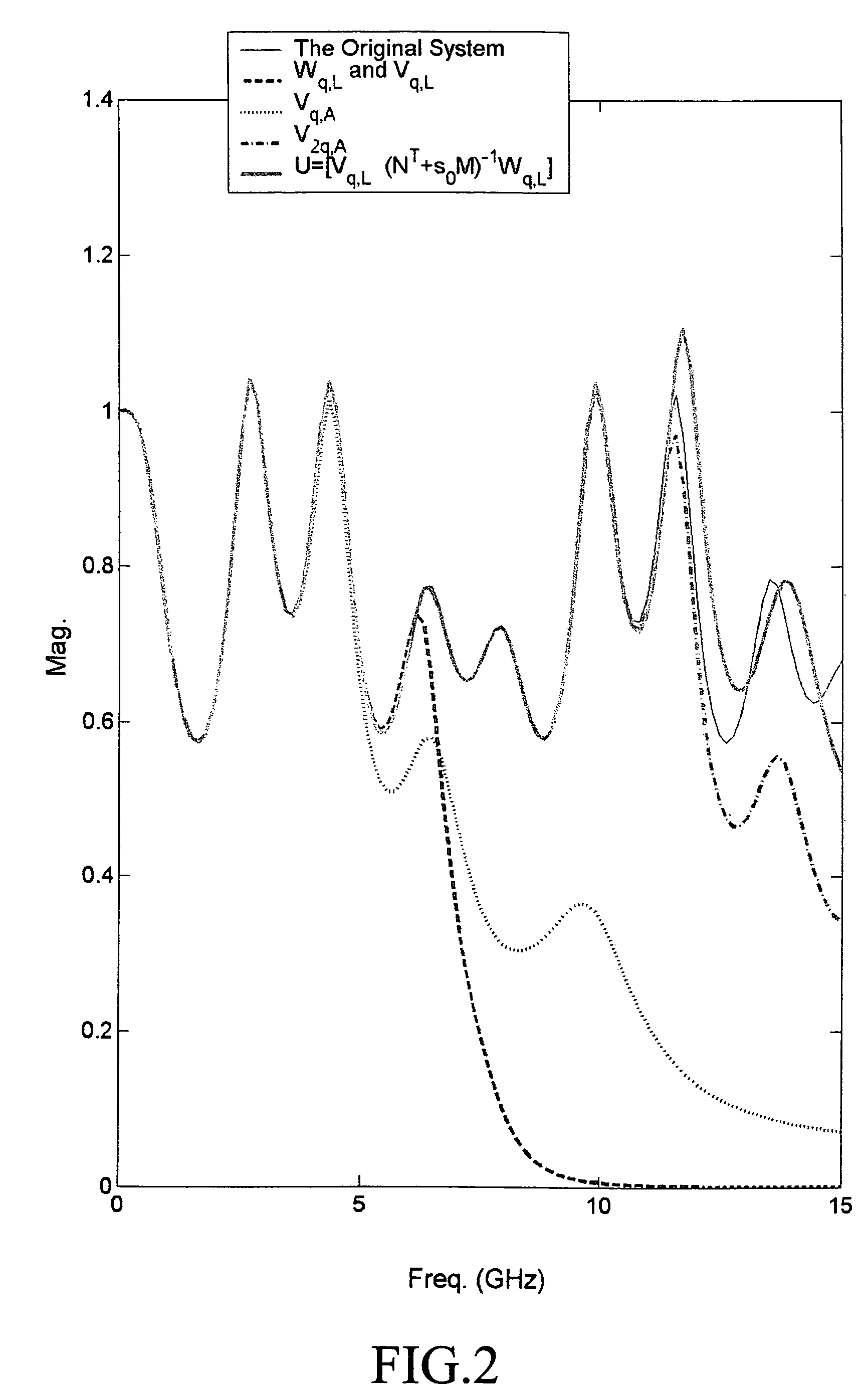Generalizations of adjoint networks techniques for RLC interconnects model-order reductions
a technology of adjoint networks and model-order reduction, applied in the field of generalization of adjoint networks techniques, can solve the problems of inability to guarantee two-sided relationships and no longer ignore the parametric effects of interconnects, and achieve the effect of reducing 50% of the computational complexity of constructing the congruence transformation matrix and demonstrating accuracy and efficiency
- Summary
- Abstract
- Description
- Claims
- Application Information
AI Technical Summary
Benefits of technology
Problems solved by technology
Method used
Image
Examples
Embodiment Construction
[0013]The dynamics of RLC interconnect networks can be represented by the following modified nodal analysis (MNA) formulae:
[0014]Mⅆx(t)ⅆt=-Nx(t)+Bu(t),y(t)=DTx(t)whereM=[C00L],N=[GE-ETR],x(t)=[v(t)i(t)],(1)
[0015]x(t)εRn is the state vector, u(t)εRm is the input vector, y(t)εRp is the output vector, and M,NεRn×n, BεRn×m,and DεRn×p are so-called the MNA matrices. M and N containing capacitances in C, inductances in L, conductances in G and resistances in R are positive definite, M is symmetric and N is non-symmetric. E presents the incident matrix for satifying Kirchhoff's current law. x(t) contains node voltages V(t)εRnv and branch currents of inductors i(t)εRni, where n=nv+ni. If the m-port driving-point impedance is concerned, then p=m and D=B.
[0016]Let the signature matrix be defined as S=diag(Inv,−Ini) so that the symmetric properties of the MNA matrices are as follows:
S−1=S,SMS=M, and SNS=NT (2)
Under this situation, if port driving-point impedance is concerned, th...
PUM
 Login to View More
Login to View More Abstract
Description
Claims
Application Information
 Login to View More
Login to View More - R&D
- Intellectual Property
- Life Sciences
- Materials
- Tech Scout
- Unparalleled Data Quality
- Higher Quality Content
- 60% Fewer Hallucinations
Browse by: Latest US Patents, China's latest patents, Technical Efficacy Thesaurus, Application Domain, Technology Topic, Popular Technical Reports.
© 2025 PatSnap. All rights reserved.Legal|Privacy policy|Modern Slavery Act Transparency Statement|Sitemap|About US| Contact US: help@patsnap.com



